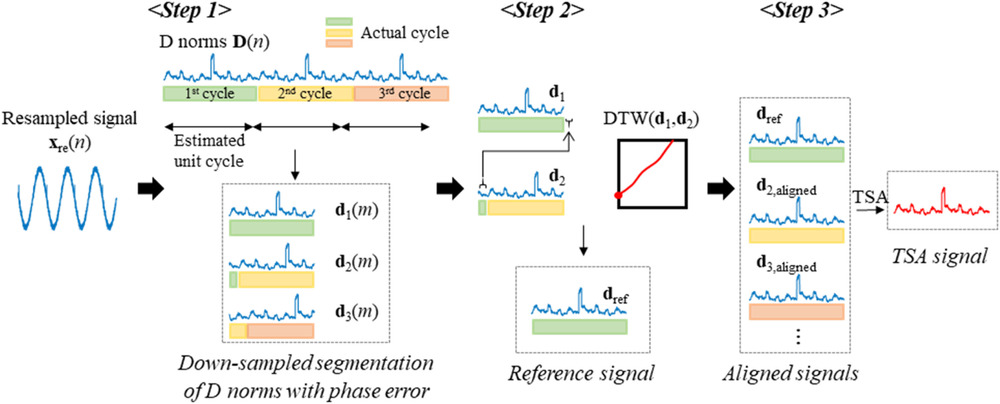2025 Enhancing Gearbox Fault Diagnosis Under Phase Estimation Errors: A Dynamic Time Warping and Blind Deconvolution Approach
본문
- Journal
- Journal of Sound and Vibration
- Date
- 2025-03
- Citation Index
- SCIE (IF: 4.9, Rank: 8.5%)
- Vol./ Page
- Vol. 598, pp. 118851
- Year
- 2025
- Link
- https://doi.org/10.1016/j.jsv.2024.118851 495회 연결

Abstract
The blind deconvolution technique is widely used to extract subtle fault-related features from the noisy vibration signals of rotating machinery. However, utilizing conventional Minimum Entropy Deconvolution (MED) methods is challenging for analyzing gearboxes, where significant internal and external non-Gaussian disturbance signals are inherent. Although periodicity analysis with signal alignment can be employed to solve this challenge, most available methods require exact phase information for the signals; this must be measured by a specially installed encoder system. To address this issue, this paper introduces a novel method for the fault diagnosis of gearboxes that effectively addresses the significant challenge of extracting periodic fault characteristics from noisy vibration signals, particularly in scenarios characterized by significant phase estimation errors and without the need for an encoder system. By combining the strengths of blind deconvolution with Dynamic Time Warping (DTW)-based sequential signal alignment, our method facilitates the identification and alignment of samples with identical rotational phases. This approach enables the distinction between impulsive features caused by faults and those resulting from noise, thus overcoming the limitations of conventional techniques, which fail to extract periodic fault characteristics under phase estimation errors. The effectiveness of the proposed approach is verified through analytic simulation and experimental validation using data from 2-kW planetary gearbox testbeds at Seoul National University (SNU) and the Korea Research Institute of Standards and Science (KRISS). Results demonstrate the superiority of the proposed method for identifying fault conditions under significant phase estimation errors compared to conventional methods.
